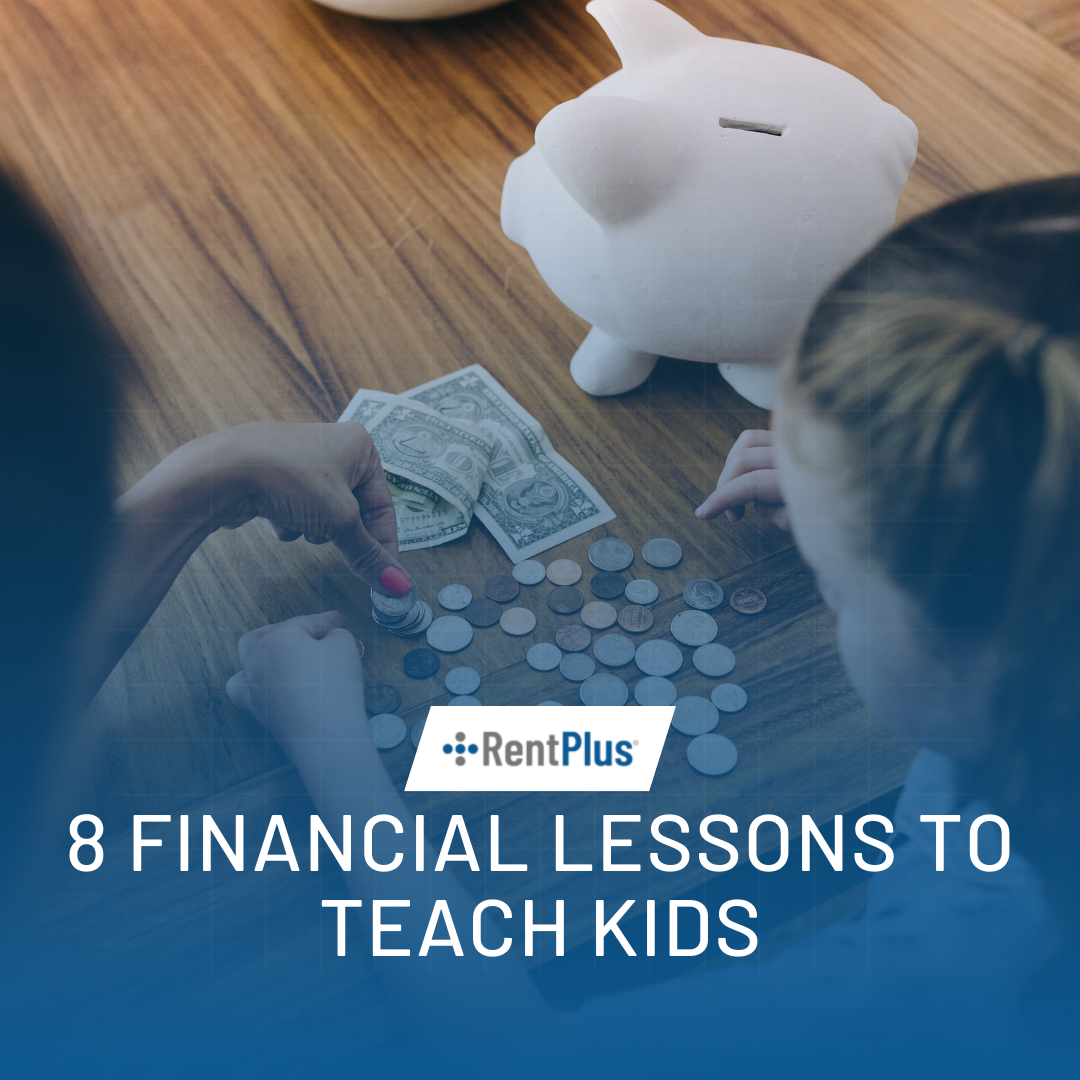Whether we like it or not, finances control almost all of our day-to-day decisions. From the moment we wake up and turn on the light, we are subconsciously deciding it’s important to spend money on electricity. Even as we sleep, the heater or a/c unit are keeping us at a comfortable temperature, as well as racking up the utilities bill. As adults, we know how much money controls our lives. But what about our children? What do our kids know about budgeting, saving, or paying bills?
Researchers at the University of Cambridge reported that kid’s money habits are formed by age seven. And most children are able to grasp the idea of saving and spending as early as age three. Children are very aware of their surroundings. They understand the concept of spending very quickly. But what about saving? Have you taken the time to teach your children how to be financially smart with their money?
It’s never too late.
Here are 8 financial lessons you should teach your children before they head off to college:
1. Let your children see real cash. We live in an age where everything is paid for with credit cards or online. This can easily give children the wrong idea that a little plastic card will let them buy whatever they want. Give your children a few dollars and let them decide which fruit to buy at the store. Or take them to the bank with you and help them understand that the bank is keeping your money safe for you.
2. Let your children handle their own money. Give your children a chance to receive and spend their own money. Whether you decide to give them an allowance or make them work for their funds, this will give your children an early opportunity to understand the consequences of their decisions. You can also give your kids a see-through piggy bank so they can see their money and be aware of how much they have.
3. Teach about the importance of saving and sharing. While most kids grasp the concept of receiving and spending right away, it’s vital to emphasize the importance of saving and sharing as well. It helps if you have a jar for each category so your kids can see how much is in each one. Teach your children about the difference between buying something small now, or saving their money for something they’ll really love in the future. And it might also be fun to let your child decide where to share their money. Help them save 10% of their money (or however much you prefer) to be used to help someone in need. They can give it to a homeless shelter, donate it to your church, or help a friend in need.
4. Encourage them to set goals. Have you ever wanted something expensive and had to work hard to earn it? Working hard to achieve a goal is a great opportunity for your kids as well. Help them create a “dream board” and encourage them to put a picture of what they want to buy on the board. This will help children learn delayed gratification. It’s also a great practice for saving for big things like retirement or a car.
5. Let your children make mistakes. It’s ok to let your children waste their money on something you know won’t last long, because it might teach them a valuable lesson. Teach your children that they have to live with their choices. And don’t bail them out if they want something they can’t afford. Let them know how much money they still need to afford whatever they want and help them come up with a plan to work towards obtaining the necessary funds for it.
6. Teach them to budget. When you feel like your children are old enough, encourage them to write down what they earn and spend. This will help them understand where their money is going. If your children beg for something they don’t have enough money for, don’t give in and buy it for them. Help your children figure out how to earn that money on their own or you could give them a “loan” and let them pay you back with monthly payments.
7. Talk about your family finances. Don’t just tell your kids that you can’t buy something or can’t afford to go someplace. Explain to them how everything costs money. Help them understand why you might not be able to afford to send them to basketball camp because you still have to pay the rent, utilities, insurance, phone bill, taxes, groceries, etc. Work together as a family to find room in the budget for things they might really want or help them get a job to assist in paying for some of the expenses.
8. Teach your kids about credit. Credit is an important part of our financial culture. Too many kids grow up with little to no idea how credit cards work. Once they get a taste of spending money freely with a credit card, it’s hard to stop and, before they know it, they’re up to their necks in credit card debt and student loans. Teach your kids how to build their credit score and maintain a healthy credit card balance before they leave home.
We’re raising the next generation of financial experts. Let’s help our children get a jump start on their finances by teaching them how to take control of their finances now so their finances don’t take control of them in the future.
If you’d like more information on how to build your credit and create financial stability, check out FinStrong today. The FinStrong financial education program is founded on research-based financial principles designed to help you identify what you value most.



